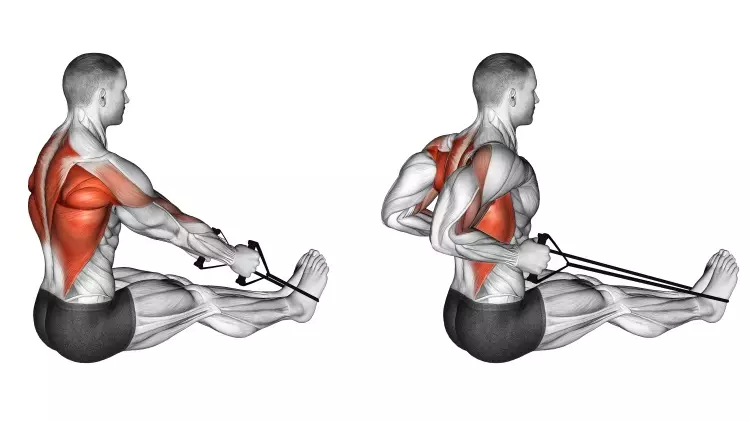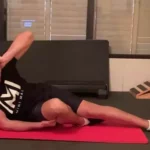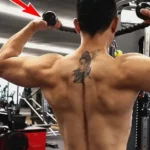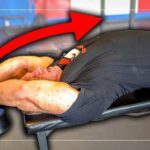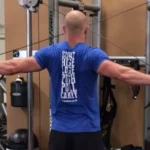Hey, everybody welcome to shape insider. And today I’m going to show you the Best Upper Back Pain Relief Exercise. So let’s get started. So my favorite exercise for the upper back area is seated rows.
So seated rows do best if you have a resistive band. If you don’t have a resistive band, you can do this without the band. But I’d really if you’re working on exercises and getting some strength in muscles, I’d really recommend some resistant bands because they’re really helpful in getting those muscles working.
Just make sure you’re starting off with the lightest one, depending on what brand it is, sometimes the colors are different. So for these exercises, I’m gonna do them for time instead of reps.
So we’re gonna do three sets of 30 seconds, and just kind of do as many reps as you comfortably can in that time. So I like to do them in a seated position and wrapped around my feet.
Read More:
- 7 Best Long Head Bicep Exercises for Massive Arms
- How to Do Cable Front Raise for Bigger Shoulder
- How to do Side Lying Bicep Curls for Bigger Arm
How to Perform Seated Row
To perform the seated row perfectly follow these steps and keep in mind, to perform this exercise slowly and squeeze at the end of the range.
- Begin by sitting on the floor with your legs extended in front of you. Loop a resistance band around your feet, and hold onto the ends of the band with both hands.
- Sit up tall with your back straight and your shoulders relaxed. Your arms should be straight, with the band pulled tautly.
- Begin the movement by squeezing your shoulder blades together, and pulling the band towards your body. Your elbows should stay close to your sides as you pull the band toward your chest.
- Pause for a moment at the top of the movement, and then slowly release the tension on the band to return to the starting position.
- Repeat the movement for the desired number of reps.
Some additional tips to keep in mind:
- Make sure to keep your back straight and your shoulders relaxed throughout the movement.
- Focus on pulling the band towards your body using your back muscles, rather than just using your arms to pull the band.
- You can adjust the resistance of the band by either using a thicker or thinner band or by adjusting the position of your hands on the band.
Anatomy Behind Upper Back Pain Relief Exercise

Upper back pain can be caused by a number of factors, including poor posture, muscular imbalances, and injuries. One effective way to relieve upper back pain is through exercise. Here are some of the key muscles involved in exercises that can help relieve upper back pain:
- Trapezius muscles: The trapezius muscles are a large muscle group that runs from the base of the skull down to the mid-back. They are involved in many upper body movements, including shrugging the shoulders and pulling the shoulder blades together. Exercises that target the trapezius muscles, such as rows and pull-ups, can help relieve upper back pain.
- Rhomboid muscles: The rhomboid muscles are located in the upper back, between the shoulder blades. They are responsible for retracting the shoulder blades (pulling them together). Weak rhomboids can contribute to poor posture and upper back pain. Exercises that target the rhomboids, such as rowing exercises and scapular retractions, can help strengthen these muscles and alleviate pain.
- Erector spinae muscles: The erector spinae muscles run along the length of the spine, from the lower back up to the neck. They are involved in back extension, which is important for maintaining good posture. Strengthening the erector spinae muscles can help reduce upper back pain.
- Latissimus dorsi muscles: The latissimus dorsi muscles, also known as the “lats,” are located on either side of the back, underneath the armpits. They are involved in many upper body movements, including pulling the arms down and back. Exercises that target the lats, such as pull-ups and lat pulldowns, can help relieve upper back pain.
Overall, exercises that target these key muscle groups can help strengthen the upper back and alleviate pain. It’s important to start slowly and gradually increase the intensity of your workouts and to consult with a healthcare professional if you have any underlying medical conditions that could be contributing to your pain.
Now, this is my favorite exercise for the upper back, the shoulders as well and the neck. But I’ve found that works great for my patients. This is great for improving posture as well. But you know, everybody’s a little bit different. So sometimes there are other exercises, that might be better for you. But this is definitely my favorite.
